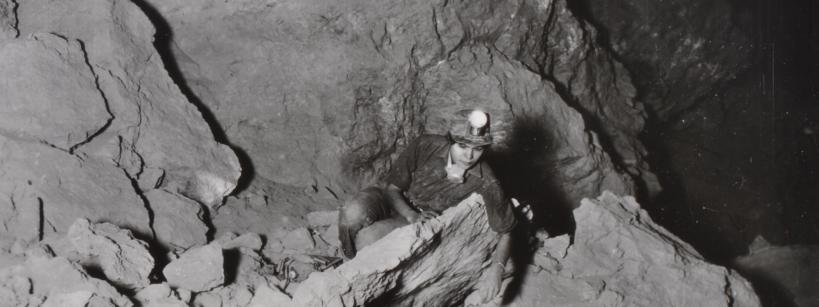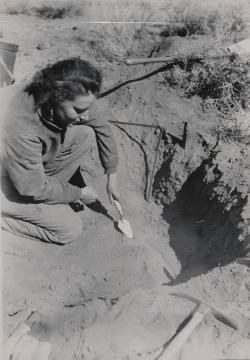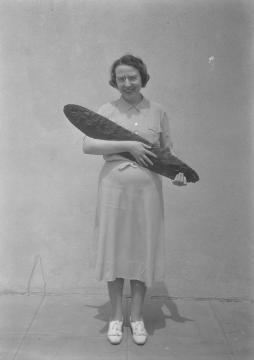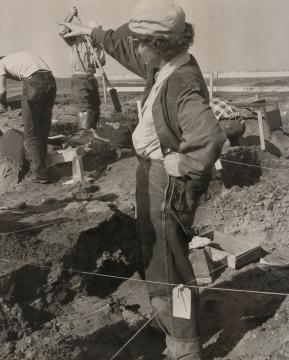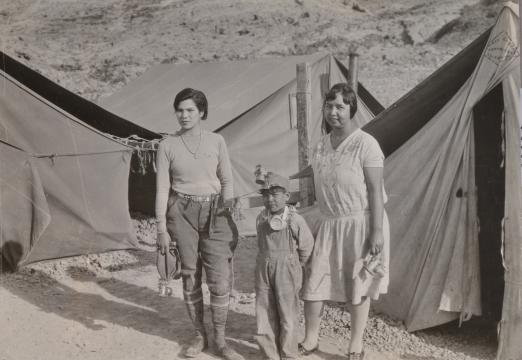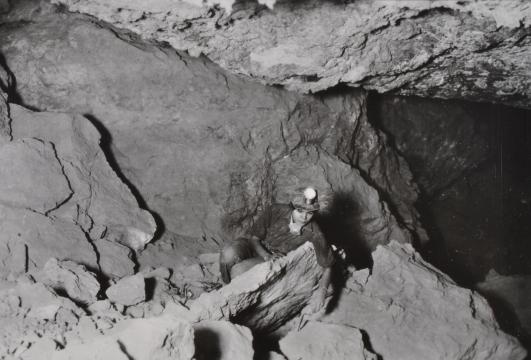By Victoria Bernal, Women in the Archives Social Media Manager
*Thank you to archaeologist Karimah Richardson and archivist Liza Posas for their insights on the importance of the women archaeologists’ archives at The Autry.
In commemorating October as both Archives Month and Archaeology Month, we dug into the archives of several women archaeologists in the Autry’s collections. Archaeologists Frances Watkins, Ruth Simpson, and Bertha Parker Cody each played a role in the archeological efforts of the Southwest Museum, the first museum in Los Angeles to promote both anthropology and its sub-discipline, archaeology. While most institutions excavated sites in Egypt and Greece, Charles Lummis and the Southwest Museum explored locations in California, the Great Basin, and in the Southwest. In 1928, Mark Raymond Harrington was hired by the museum and would lead its archaeological efforts over the next 40 years. The papers of Frances Watkins, Ruth Simpson, and Bertha Parker Cody not only illustrate the history of these early efforts but also document what rarely made it into published journals at the time—that women played a prominent role at many of these early digs. These women assisted at the sites, coordinated projects, cooked the meals, wrote up notes, and in some cases, led excavations while consulting with lead male archaeologists.
Anthropologist Frances Emma Watkins (1899–1987) worked at the Southwest Museum from 1930 through the 1950s. The Frances E. Watkins Papers (MS.8), held at the Library and Archives at the Autry include 32 boxes of clippings, correspondence, images, maps, manuscripts, notes, and monographs. She published an essay in the 1930s in which she opined that “women are, I think, peculiarly adapted to these new methods of excavation and research.” After graduating from the University of Denver in 1929 with specialization in archaeology and anthropology, Watkins joined Isabel Kelly and Eva Horner in New Mexico in what was possibly the first excavation directed by an all-female team. Since it’s well documented that the role of record-keeping often fell onto women, it’s not surprising that Watkins organized many of the Southwest Museum’s files and institutional archives. She even wrote out the filing system by hand. Her handwriting can also be seen on the tags of a number of historical artifacts in the museum.
As the mid-century archaeologist and curator for the Southwest Museum, Ruth DeEtte Simpson (1919–2000) conducted excavations in Arizona and California’s Mojave Desert. Simpson was in high school when she started volunteering in the archaeological collection at the Southwest Museum. She planned to pursue a career in sports writing, but a high school career day changed her professional path when she discovered she could major in Anthropology. She graduated from USC’s undergraduate and graduate anthropology programs while assisting local archeologists in the field during her studies. From the Southwest Museum, she went to work as curator for the San Bernardino County Museum in 1964. She was the director of the Calico Early Man Archaeological Site, which was later steeped in controversy over the date of the artifacts discovered. The Ruth DeEtte Simpson Archaeological Research Papers and Notes Collection (MS.1312) at the Autry includes archaeological reports, maps, tourist brochures, manuscripts, and published articles about California and the Southwest from 1942–1996.
Considered one of the first female Native American archeologists, Bertha Parker Cody (Abenaki/Seneca, 1907–1978) was the daughter of Beulah and Arthur C. Parker, a well-known Native American archaeologist who was the first president of the Society for American Archaeology. Young Parker Cody joined her father on his excavations, though this stopped when her parents divorced and her mother moved them to Los Angeles. She returned to archaeology around 1927 after her first marriage ended. Her archaeologist uncle (by marriage) Mark Raymond Harrington invited her to join a team in the field as a cook and expedition secretary. She eventually made several important discoveries that included finding a ground sloth skull next to man-made artifacts in 1930. At that time, this provided the earliest record of human inhabitance in North America. Parker Cody is often remembered for the men in her life—her father, her uncle Mark Raymond Harrington, and her last husband Iron Eyes Cody. The fact that her gravestone reads “Mrs. Iron Eyes Cody” gives no indication to her accomplishments at the first female Native American archaeologist.
Documents related to Parker Cody have a scattershot existence among different archive collections making it a challenge to tell her story in full. A chapter about Parker Cody is included in the book Savage Kin, published in 2018 and written by anthropologist Margaret M. Bruchac (Abnekai). In writing about Parker Cody’s life experiences and accomplishments, Bruchac conducted extensive research at the Autry, the University of Rochester, New York State Museum, and American Philosophical Society archives, as well as scoured newspaper articles and private family papers. Parker Cody’s story will also be featured along with her own accomplishments will also be featured in the Autry’s upcoming exhibit, What’s Her Story: Women in the Archives.
These brief biographies only skim the surface of these women’s stories found in the archives. While the field of archaeology has matured considerably since the time of Lummis and Harrington, a look at the women’s archives can be disheartening as they reveal that not much has actually changed in the last 100 years. In these archival papers, we see that, like today, women scientists often carried the administrative workloads. Many serve as technicians for archeological projects yet are still not named as lead for the high-profile National Science Foundation grants. Fortunately, as archeologist Karimah Richardson explained, researchers and archivists at the Autry are excavating these old archives to unearth the women’s stories that have been buried in plain sight.
